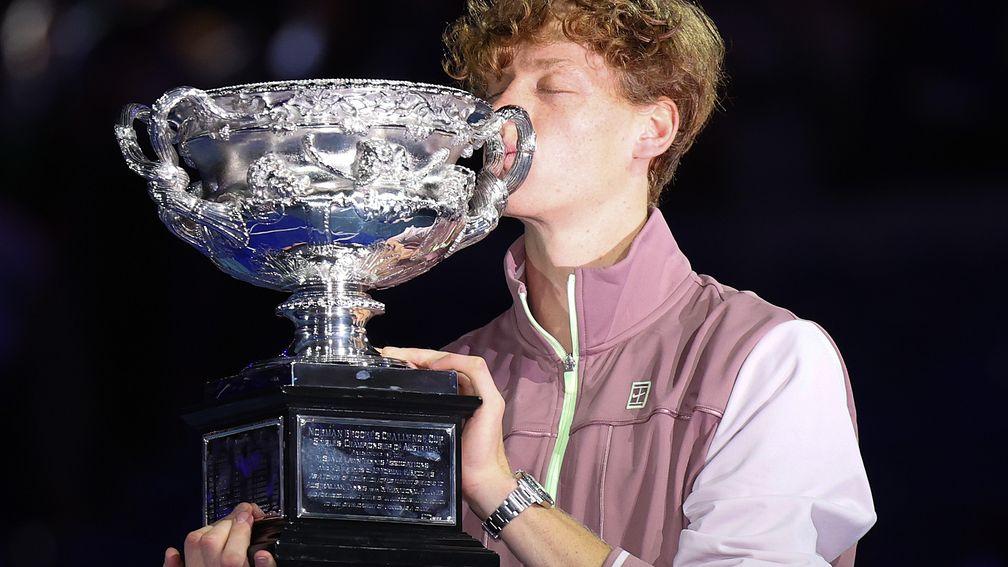Joe Champion: In defence of the five-set thriller – and why it’s time the WTA stars joined in
Two contrasting Australian Open finals served to reignite the debate about five-set matches

The term 'five-set thriller' is used far too frequently by tennis commentators and writers, this one included, to describe a Grand Slam match which goes the distance.
Grand Slam titles are tough to win – even if your name is Novak Djokovic – and Jannik Sinner certainly had to do it the hard way when outlasting Daniil Medvedev for a 3-6 3-6 6-4 6-4 6-3 triumph in last Sunday's Australian Open final.
Whether used with tongue firmly in cheek or with a degree of seriousness, the five-set thriller and best-of-five tennis in general remain the main point of difference between the Grand Slams and the week-to-week grind of the ATP World Tour.
From 2018 onwards, John Isner, Alexander Zverev, Karen Khachanov, Fabio Fognini, Hubert Hurkacz, Stefanos Tsitsipas, Cameron Norrie, Taylor Fritz, Pablo Carreno Busta, Borna Coric, Holger Rune and Andrey Rublev have all won Masters 1000 titles over the best-of-three format.
How many of them have won Grand Slam titles? None. How many have reached finals? Only Zverev and Tsitsipas. Five-set tennis, still argued against in some quarters, clearly separates the good players from the truly great. It offers a test of stamina, concentration and resilience.
Without the longer format, Medvedev might well have won 6-3 6-3 in a rather unremarkable Aussie Open final, not unlike the women's equivalent the previous day where Aryna Sabalenka cruised to a 6-3 6-2 win over young pretender Qinwen Zheng.
In a world where the men play best of three, the 1980 US Open final between Bjorn Borg and John McEnroe would have resulted in a 7-6 6-1 blowout in favour of the American while Rafael Nadal would have produced a routine 6-4 6-4 victory to dethrone Roger Federer at Wimbledon in 2008. Neither match would have lived long in the memory.
Conversely, consider how many potentially brilliant finals tennis fans have been denied because women have not been given the opportunity to compete over the longer format.
While a five-set match probably wouldn't have stopped Sabalenka from demolishing Zheng, it would've been fascinating to see how she would have fared if the ding-dong 2023 final with Elena Rybakina had gone beyond a third.
Rybakina lost to Anna Blinkova in the second round this year, while world number one Iga Swiatek didn't make it to the second week either. With more time to assert their class, both might have turned their matches around.
Shocks are fun but they're more dramatic in the men's game because they're so infrequent at the highest level. Seeing the top players go toe to toe in the latter rounds remains the single most exciting aspect of Grand Slam tennis for both the fan and the punter.
There are logistical issues to consider. A venue can accommodate only so many contests at one time and the Australian Open already has its own problems with late finishes. But there are potential solutions including venue expansion, five-set matches from the fourth round onwards for both men and women, or earlier starts - does Wimbledon really need to start play on Centre Court at 1pm so invited guests can enjoy lunch beforehand?
With the WTA's new big four of Swiatek, Sabalenka, Rybakina and Coco Gauff grabbing the headlines and a number of future stars waiting in the wings, it's surely time for parity when it comes to match lengths for men and women.
The five-set thriller might be an overused turn of phrase but the format, whether you love it or hate it, is shockingly absent from the women's game.
Click for free bets and betting offers from the Racing Post
Published on 2 February 2024inOpinion
Last updated 15:39, 6 February 2024
- Sport’s ever-increasing riches coming at the expense of competition
- Simon Giles: Cherries ripe for further success under impressive Iraola
- Mark Langdon: Simone Inzaghi deserves more love
- Thriving non-league football is mercifully yet to be marred by VAR
- James Milton: English football is under a cloud but Sky Blues could brighten the mood
- Sport’s ever-increasing riches coming at the expense of competition
- Simon Giles: Cherries ripe for further success under impressive Iraola
- Mark Langdon: Simone Inzaghi deserves more love
- Thriving non-league football is mercifully yet to be marred by VAR
- James Milton: English football is under a cloud but Sky Blues could brighten the mood